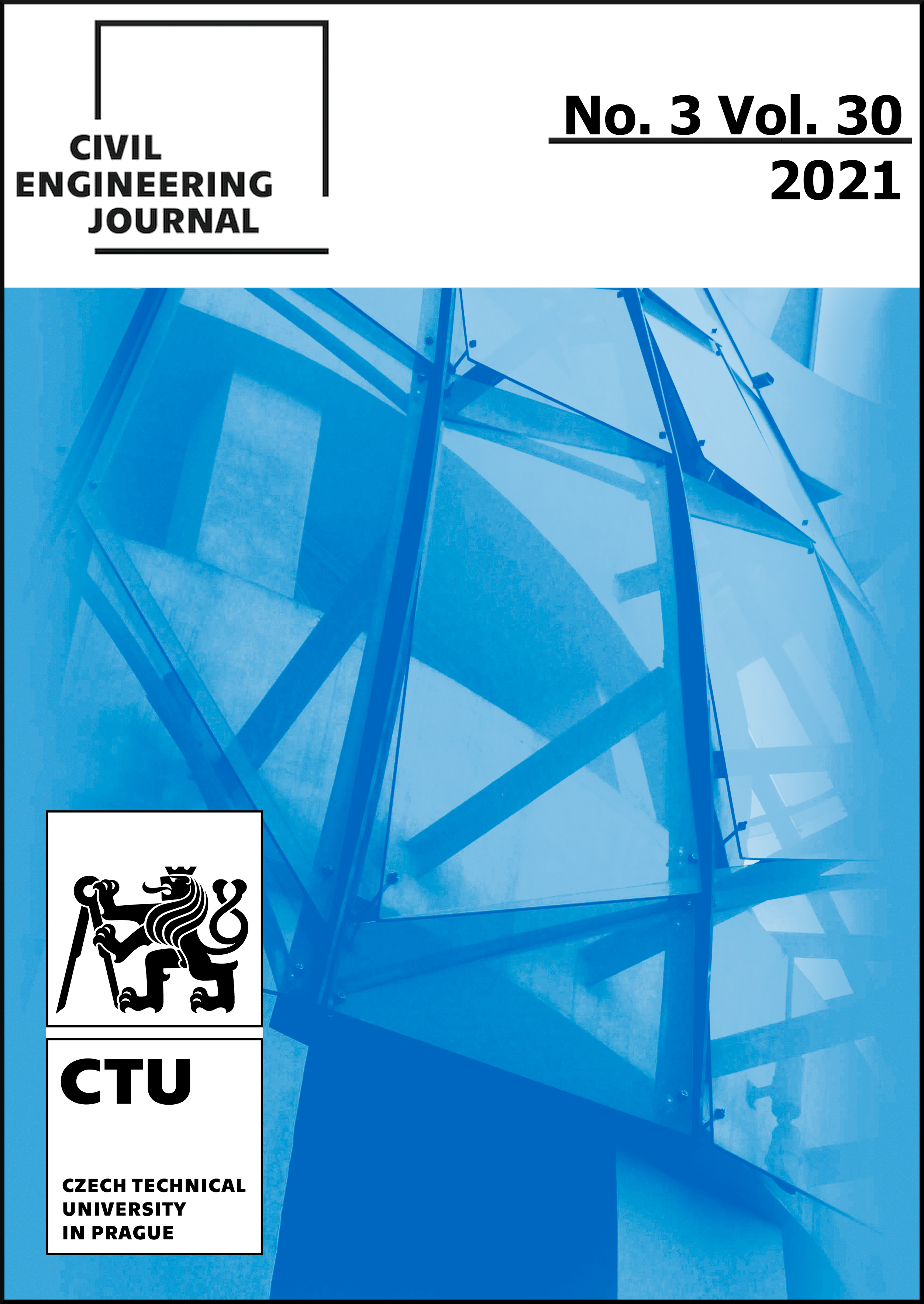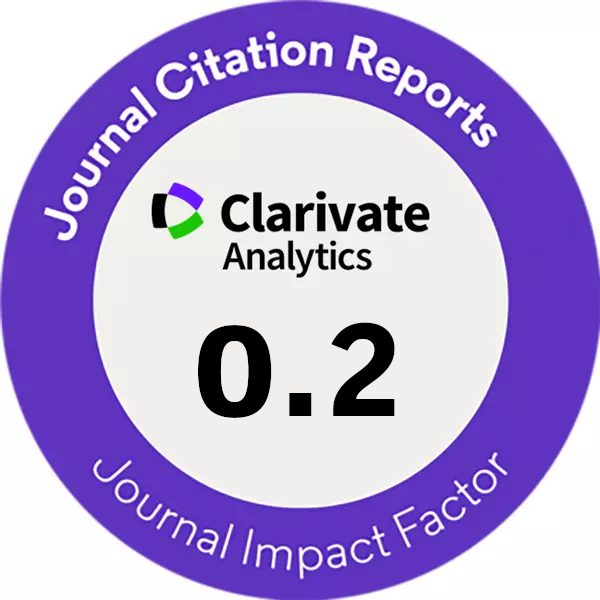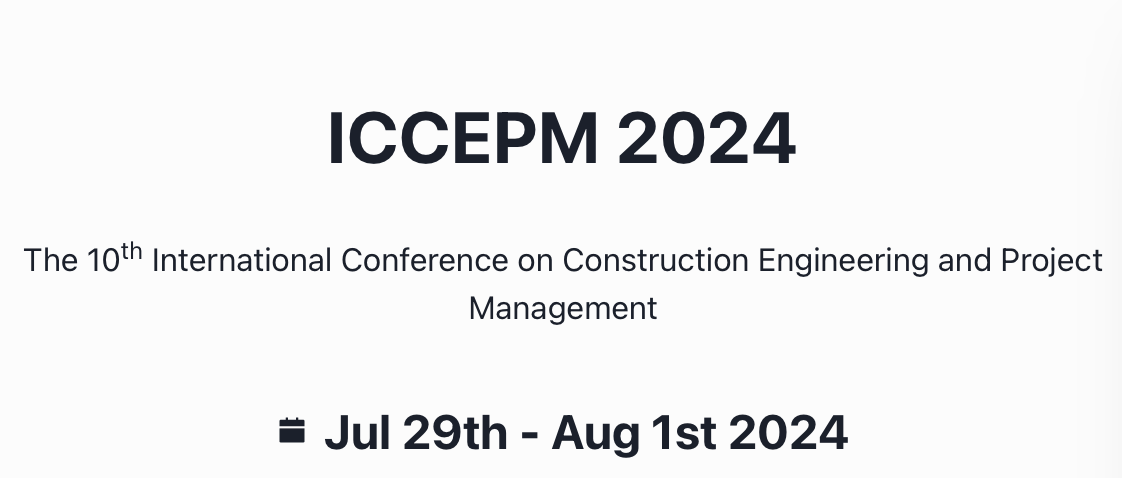Mechanical Properties of Lightweight Foamed Concrete Reinforced with Raw Mesocarp Fibre
DOI:
https://doi.org/10.14311/CEJ.2021.03.0047Keywords:
Foamed concrete, Pressed fibre, Compression, Flexural, Water absorption, PorosityAbstract
Lightweight foamed concrete (LFC) is recognised for its high flowability, minimal utilization of aggregates and superior heat insulation properties. LFC is excellent under compression but poor in tensile stress, as it produces multiple microcracks. LFC cannot withstand the tensile stress induced by applied forces without additional reinforcing elements. Hence, this study was conducted to examine the potential utilisation of oil palm mesocarp fibre (OPMF) reinforced LFC in terms of its mechanical properties. Two densities, 600kg/m3 and 1200kg/m3, were cast and tested with six different percentages of OPMF, which were 0.15%, 0.30%, 0.45% and 0.60%. The parameters evaluated were compressive strength, flexural strength and tensile strength. The results revealed that the inclusion of 0.45% of OPMF in LFC helps to give the best results for the compressive strength, flexural strength and splitting tensile strength. The OPMF facilitated to evade the promulgation of cracks in the plastic state in the cement matrix when the load was applied
Downloads
References
Araya-Letelier G., Antico F.C., Carrasco M., Rojas P., García-Herrera C.M., 2017. Effectiveness of new natural fibres on damage-mechanical performance of mortar. Construction and Building Materials, vol. 152: 672-682.
Mydin M.A.O., Phius A.F., Sani N.M., Tawil NM., 2014. Potential of Green Construction in Malaysia: Industrialised Building System (IBS) vs Traditional Construction Method. E3S Web of Conferences, vol. 3: 01009
Liew K.M., Sojobi A.O., Zhang L.W., 2017. Green concrete: Prospects and challenges, Construction and Building Materials, vol. 156: 1063-1095
Mydin M.A.O, Nawi, M.N.M., Munaaim M.A.C., Mohamad N., Samad, A.A.A., Johari I., 2018. Effect of steel fibre volume fraction on thermal performance of Lightweight Foamed Mortar (LFM) at ambient temperature. Journal of Advanced Research in Fluid Mechanics and Thermal Sciences, vol. 47(1): 119-126 [5] Hegyi A., Dico C., Catalan G., 2016. Construction sustainability with adobe bricks type elements. Urbanism, Architecture and Construction, vol. 7(2): 147-156
Ardanuy M., Claramunt J., Toledo Filho R.D., 2015. Cellulosic fibre reinforced cement-based composites: A review of recent research. Construction and Building Materials, vol. 79: 115-128
Othuman Mydin M.A., 2016. Evaluation of splitting tensile strength in plain and fibre-reinforced foamed mortar. Jurnal Teknologi, vol. 78(5): 413-419
Serri E., Suleiman M.Z., Mydin M.A.O., 2014. The effects of oil palm shell aggregate shape on the thermal properties and density of concrete. Advanced Materials Research, vol. 935: 172-175
Othuman Mydin M.A., Mohamed Shajahan M.F., Ganesan S., Sani N.M., 2014. Laboratory investigation on compressive strength and micro-structural features of foamed concrete with addition of wood ash and silica fume as a cement replacement. MATEC Web of Conferences, vol. 17: 01004
Nechyporchuk O., Belgacem M.N., Bras J., 2016. Production of cellulose nanofibrils: A review of recent advances. Industrial Crops & Products, vol. 93: 2-25.
DOI 10.14311/CEJ.2021.03.0047 632
Article no. 47 THE CIVIL ENGINEERING JOURNAL 3-2021
Othuman Mydin M.A., 2015. Effect of silica fume and wood ash additions on flexural and splitting tensile strength of lightweight foamed concrete. Jurnal Teknologi, vol. 74(1): 125-129
Othuman Mydin M.A., Potential of natural and synthetic fibres on flexural performance of foamcrete mortar, Jurnal Teknologi, vol. 78(5): 431-435
Faruk O., Bledzki A.K., Fink H.P., Sain M., 2012. Biocomposites reinforced with natural fibres: 2000- 2010. Progress in Polymer Science, vol. 37(11): 1552-1596.
Jawaid M., Abdul Khalil H.P.S., 2011. Cellulosic/synthetic fibre reinforced polymer hybrid composites: A review, Carbohydrate Polymers, vol. 86(1): 1-18.
Mydin M.A.O., Zamzani N.M., Ghani A.N.A., 2018. Effect of alkali-activated sodium hydroxide treatment of coconut fibre on mechanical properties of lightweight foamed concrete, in 3rd International Conference on Applied Science and Technology, vol. 5055512: 020108.
Jiang D., Cui S., Xu F., Tuo T., 2015. Impact of leaf fibre modification methods on compatibility between leaf fibres and cement-based materials, Construction and Building Materials, vol. 94: 502-512.
Wei J., Meyer C., 2016. Utilization of rice husk ash in green natural fibre-reinforced cement composites: Mitigating degradation of sisal fibre. Cement and Concrete Research, vol. 81: 94-111.
Mydin M.A.O., 2017. Preliminary studies on the development of lime-based mortar with added egg white. International Journal of Technology, vol.8(5): 800-810
Othuman Mydin, M.A., Zamzani, N.M., Ghani, A.N.A., 2019. Experimental data on compressive and flexural strengths of coir fibre reinforced foamed concrete at elevated temperatures, Data in Brief, vol. 25, 104320
Mydin M.A.O., Musa M., Ghani A.N.A., 2018. Fiber glass strip laminates strengthened lightweight foamed concrete: Performance index, failure modes and microscopy analysis. AIP Conference Proceedings, vol. 2016: 020111
Mohan N.H., Ammayappan L., Sarma D.K., Debnath S., Tamuli M.K., 2017. Characterization of thermal properties of pig hair fibre, Journal of Natural Fibres, vol. 14(4): 1-7.
Ganesan S., Othuman Mydin M.A., Sani N.M., Che Ani A.I., 2014. Performance of polymer modified mortar with different dosage of polymeric modifier. MATEC Web of Conferences, vol. 15: 01039
Bentur A., Mindess S., 2006. Fibre Reinforced Cementitious Composites. CRC Press, Second edition, New York, p. 48-51
Thakrele, M. H., 2014. Experimental study on foam concrete. International Journal of Civil, Structural, Environmental and Infrastructure Engineering Research and Development, 4(1), 145-158..
Othuman Mydin M.A., 2016. Experimental investigation of axial compressive strength of lightweight foamed concrete with different additives, Jurnal Teknologi, vol. 78(5): 463-469
Othuman Mydin M.A., Mohamad N., Johari I., Abdul Samad A.A., 2018. Determination of bending and axial compression young's modulus of cellular mortar exposed to high temperatures, International Journal of Engineering and Technology (UAE), vol. 7(2): 99-102
Suhaili S.S., Mydin M.A.O., 2020. Potential of stalk and spikelets of empty fruit bunch fibres on mechanical properties of lightweight foamed concrete, International Journal of Scientific and Technology Research, vol. (3): 3199-3204
Musa M., Othuman Mydin M.A., Abdul Ghani A.N., 2019. Thermal properties of foamed concrete with addition of empty fruit bunch (EFB) fiber. International Journal of Innovative Technology and Exploring Engineering, vol. 8(10): 4662-4670
Othuman Mydin M.A., 2016. Assessment of thermal conductivity, thermal diffusivity and specific heat capacity of lightweight aggregate foamed concrete. Jurnal Teknologi, vol. 78(5): 477-482
Islam S.M., Hussain R.R., Morshed M.A.Z., 2012. Fibre-reinforced concrete incorporating locally available natural fibres in normal- and high-strength concrete and a performance analysis with steel fibre- reinforced composite concrete. Journal of Composite Materials, vol. 46(1): 111-122.
Ali M., Liu A., Sou H., Chouw N., 2012. Mechanical and dynamic properties of coconut fibre reinforced concrete, Construction and Building Materials, vol. 30: 814-825.
Othuman Mydin M.A., Mohd Zamzani N., 2018. Coconut fiber strengthen high performance concrete: Young's modulus, ultrasonic pulse velocity and ductility properties. International Journal of Engineering and Technology (UAE), vol. 7(2): 284-287
Downloads
Published
Issue
Section
License
Copyright (c) 2021 Stavební obzor - Civil Engineering Journal

This work is licensed under a Creative Commons Attribution-NonCommercial 4.0 International License.
Authors who publish with this journal agree to the following terms:
- Authors retain copyright and grant the journal right of first publication with the work simultaneously licensed under a Creative Commons Attribution License that allows others to share the work with an acknowledgement of the work's authorship and initial publication in this journal.
- Authors are able to enter into separate, additional contractual arrangements for the non-exclusive distribution of the journal's published version of the work (e.g., post it to an institutional repository or publish it in a book), with an acknowledgement of its initial publication in this journal.
- Authors are permitted and encouraged to post their work online (e.g., in institutional repositories or on their website) prior to and during the submission process, as it can lead to productive exchanges, as well as earlier and greater citation of published work (See The Effect of Open Access).
How to Cite
Accepted 2021-10-02
Published 2021-10-25










